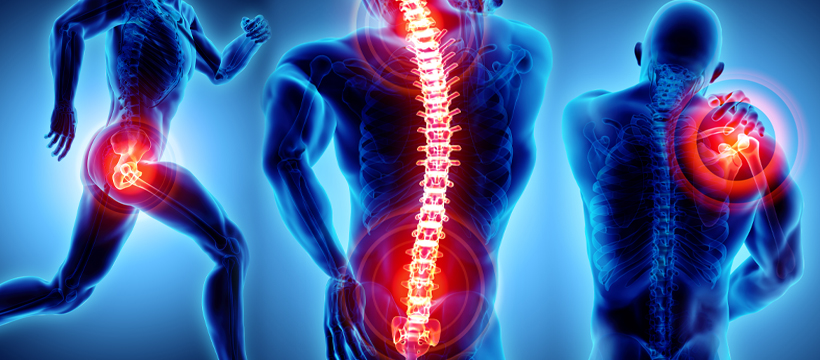PAIN MANAGEMENT

Pain refers to a highly unpleasant physical sensation caused by illness or injury. In the nursing profession, pain commonly involves any problem as in “whatever the experiencing person feels, occurring wherever the experiencing person says it does”.
What’s Pain management?
Pain management refers to an aspect of medicine and health care involving relief of various forms of pain (pain relief, analgesia, pain control) from acute and simple to chronic and challenging. This aspect of medicine involves physicians and other health professionals such as physical therapists and physiatrists. Most of these health professionals help to provide some pain control within the normal course of their practice, and in more complicated instances of pain, call on additional assistance from a medical specialty centered on pain, referred to as pain medicine. Pain management includes patient communication about the pain problem. To determine the pain problem, a health professional would ask certain questions such as:
- The intensity of the pain
- Areas where pain manifests
- When did the pain start?
- How does the pain feel?
After asking such questions, the health care provider would have a comprehensive description of the pain. Health care providers will then use pain management to address the pain. Pain management usually makes use of a multi-faceted approach for ameliorating the suffering and enhancing the quality of life of anyone experiencing pain, whether acute or chronic pain. Pain relief in general (analgesia) often involves an acute form of pain, while management of chronic pain requires additional factors.
Health Professionals involved in Pain management
Pain management often involves a wide range of health professionals. These include:
- Medical practitioners
- Pharmacists
- Nurses
- Dentists
- Physician assistants
- Recreational therapists
- Clinical psychologists
- Physiotherapists
This may also include other mental health specialists and massage therapists. Sometimes, pain subsides as soon as the underlying injury or illness heals, and treated by a practitioner, with the prescription of drugs such as pain relievers (analgesics) and infrequently, the use of anxiolytics. Effective management of long-term pain, however, usually requires the coordinated efforts of the pain management team. Effective pain management does not always imply complete cessation of pain. Rather, it usually implies achieving adequate quality of life in the presence of pain, through any combination of lessening the pain and/or better understanding it and gaining ability to carry out normal day-to-day activities despite the pain.
Physical Approach to Pain Management
- Physical medicine and rehabilitation
This makes use of a myriad of techniques such as heat and electrotherapy, as well as therapeutic exercises and behavioral therapy. These techniques usually form part of an interdisciplinary or multidisciplinary program that might also include pharmaceutical drugs.
- Exercise interventions
Physical activity interventions, such as pilates, yoga and tai chi, encourage harmony of the mind and body through total body awareness. These practices include breathing techniques, meditation and a wide range of movements, while training the body to improve flexibility, strength and various movements.
- Acupuncture
Acupuncture refers to the insertion and manipulation of needles into specific points in the body in order to ameliorate pain sensation or for therapeutic purposes.
Other forms for physical approach to pain management include:
- Sound therapy
- Intra-articular ozone therapy
- Transcutaneous electrical nerve stimulation (TENS)
Psychological approach
- Acceptance and commitment therapy
- Cognitive behavioral therapy (CBT)
- Mindfulness meditation
- Hypnosis
- Mindfulness-based pain management
Medications
The World Health Organization (WHO) recommends a pain ladder for pain management with the use of pharmaceutical medicine. WHO first brought forth this method for treatment in cancer pain, but medical professionals also use it as a general principle when managing pain. In treatment of long-term pain, the three-step WHO Analgesic Ladder provides instructions for selecting the appropriate drug. If, at any point, treatment fails to provide adequate pain relief, then the doctor and the patient move on to the next step.
- Mild pain
Paracetamol (acetaminophen) or a nonsteroidal anti-inflammatory drug (NSAID) such as ibuprofen would relieve mild pain.
- Mild to moderate pain
Paracetamol, or paracetamol in combination with a weak opioid such as tramadol, may provide greater relief than use of these drugs separately. Use of opioid in combination with acetaminophen such as Percocet, Vicodin, or Tylenol can also prove useful.
- Moderate to severe pain
The doctor must consider the type of pain, whether acute or chronic, when treating moderate to severe pain. Certain medications may work better for acute pain, others for chronic pain. Drugs prescribed for treatment of acute pain include methadone, diamorphine and fast action tablets, capsules or syrups containing OxyContin. For chronic pain, drugs treatment include oxycodone, morphine and fentanyl.
References
Hardy PA (1997). Chronic pain management: the essentials
https://www.drugs.com/acetaminophen.html
